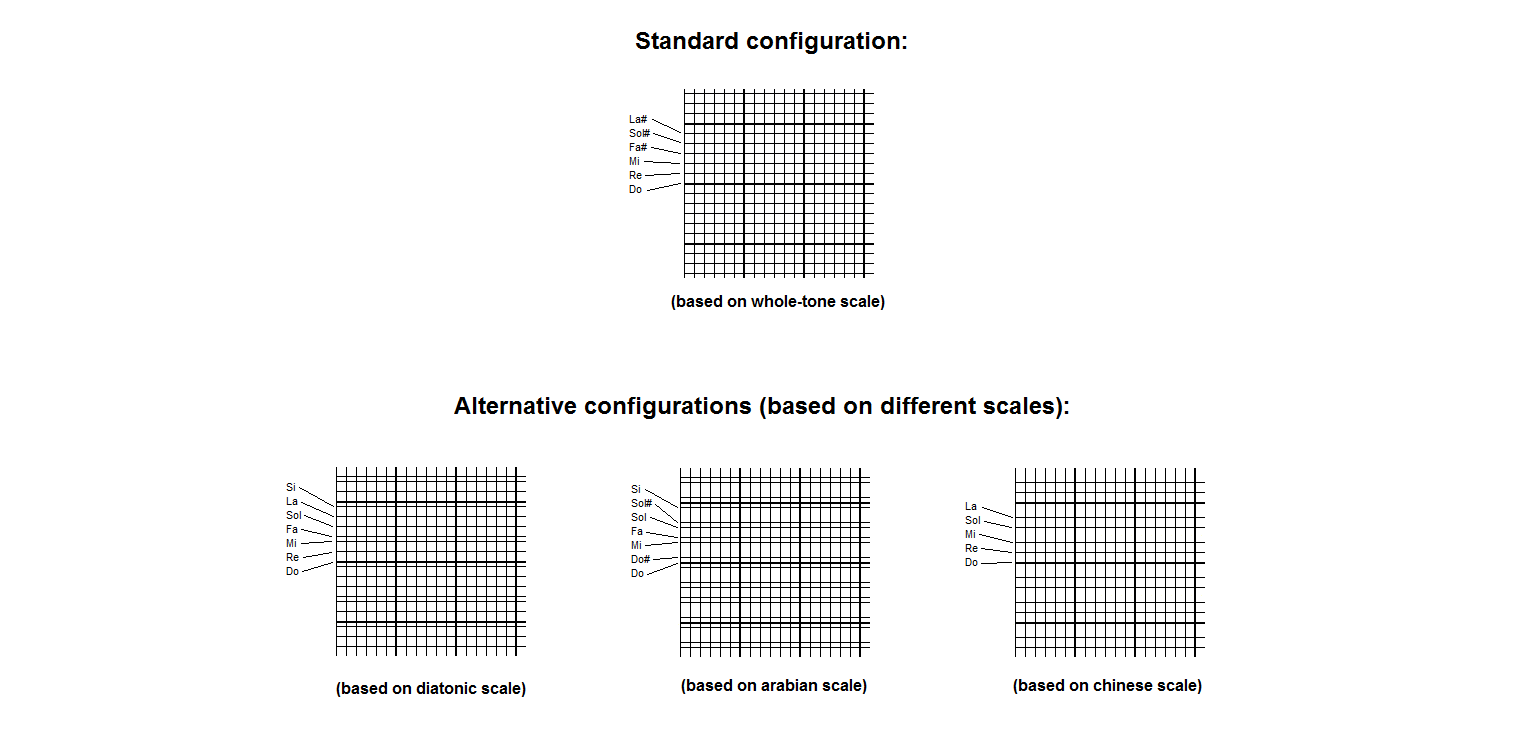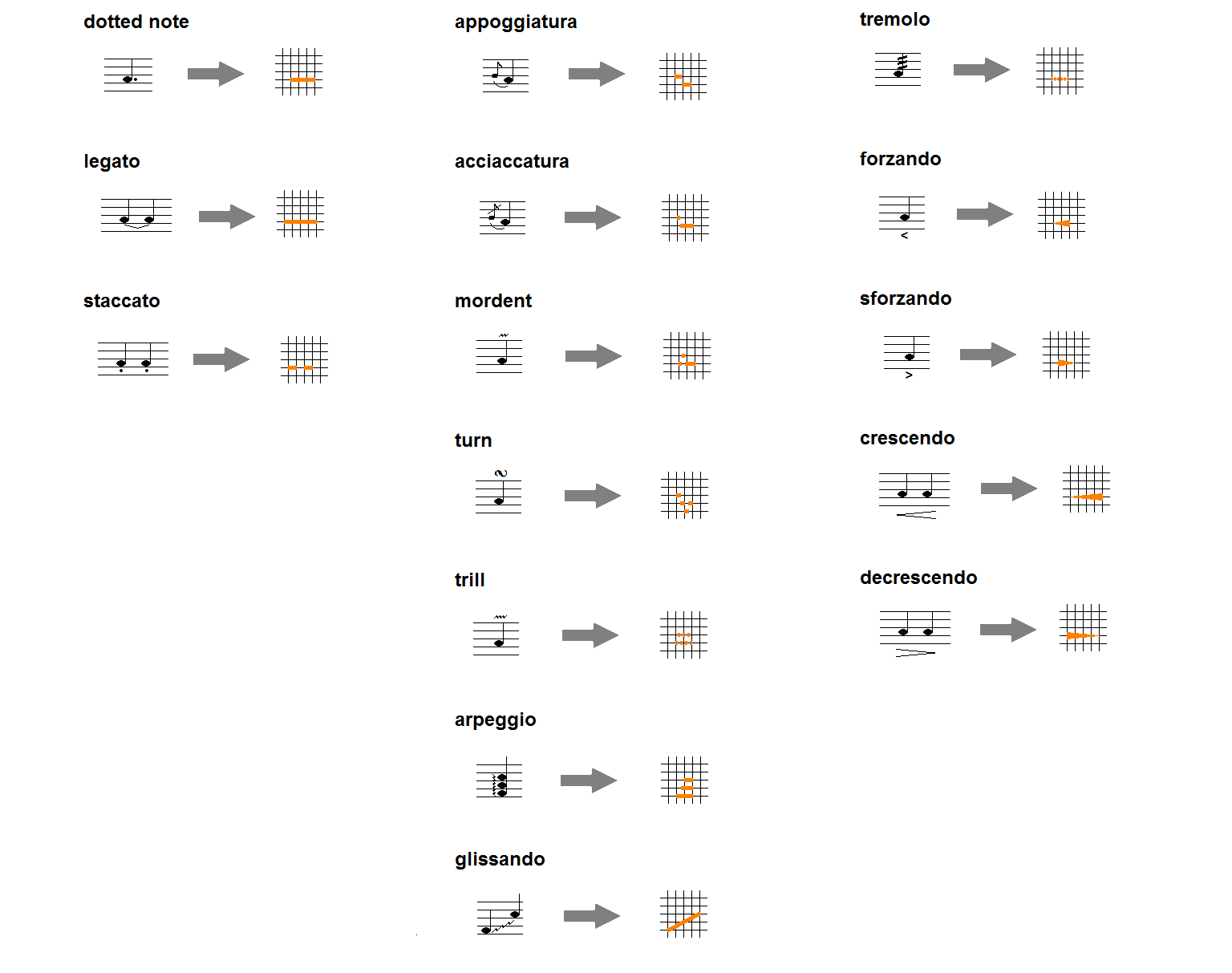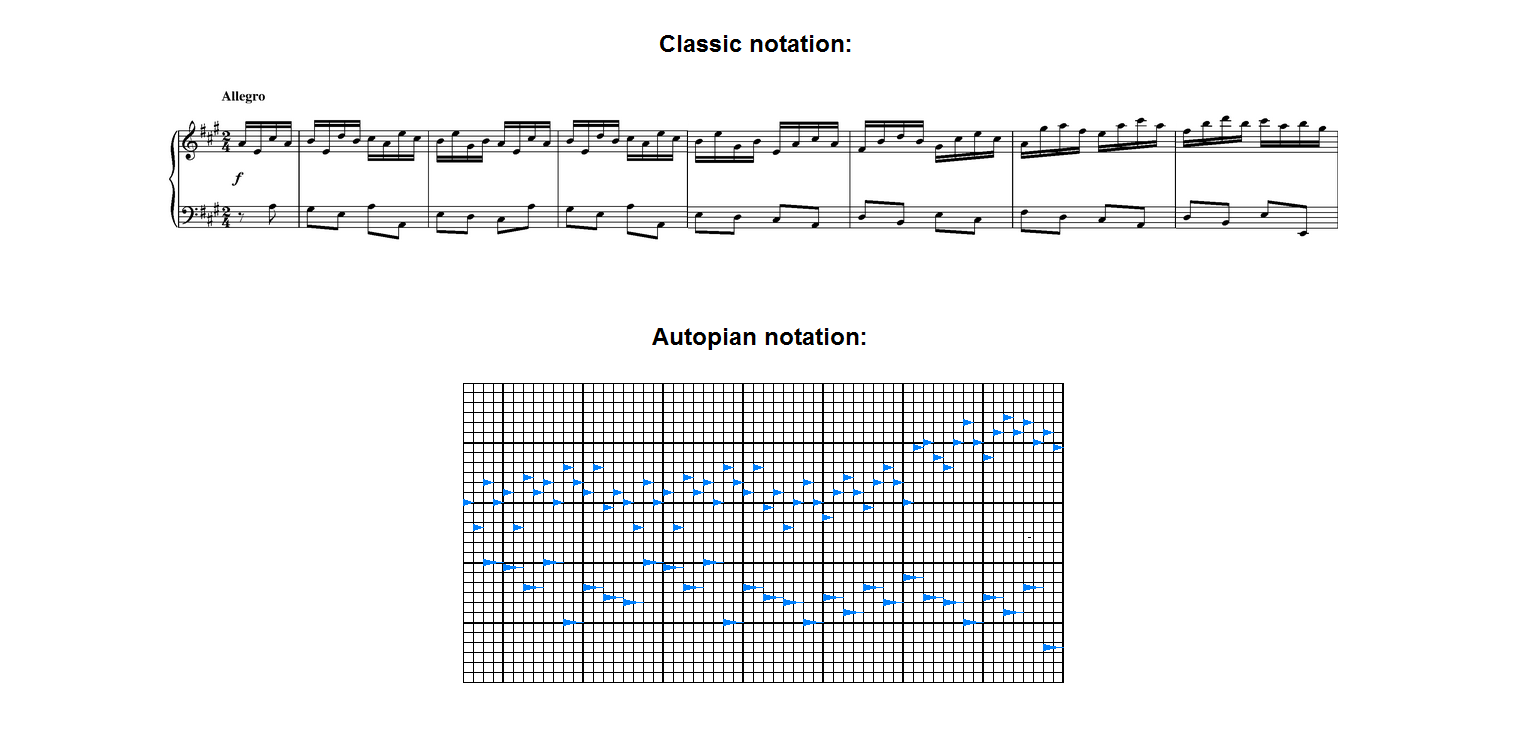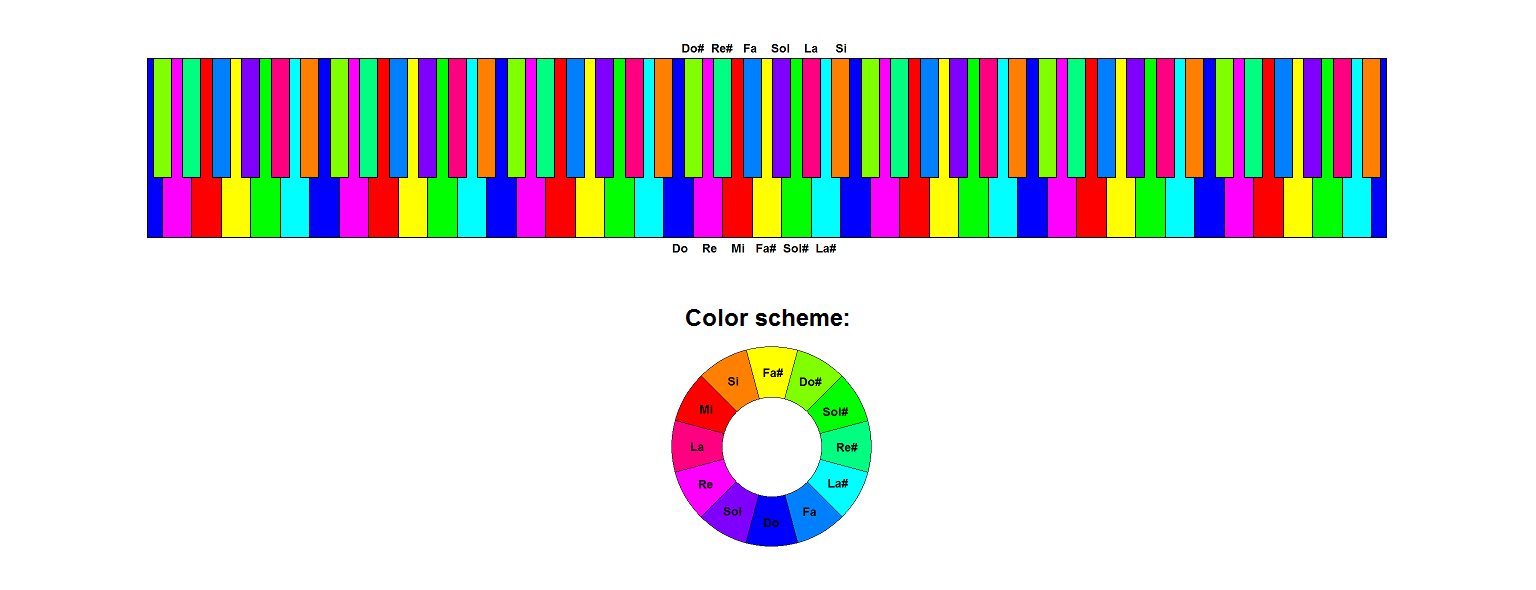
Musical Notation
Abstract
The official international standard of musical notation of the Universal Selfederation.
Score
In the autopian notation, the score is read as a cartesian plane, where the horizontal axis represents time and the vertical axis represents pitch.
It can be indefinitely extended and/or stretched in both dimensions.

The horizontal lines help identify the exact pitch of the notes: the thick horizontal lines are used to delimit octaves, while the thin ones delimit tones; in the standard configuration each octave is divided into 6 tones (whole-tone scale); however, different configurations can be used at the choice of the composer in order to better fit the musical scale of the composition.

The vertical lines help identify time intervals: the thick vertical lines mark are used to delimit bars, while the thin ones delimit beats; in the standard configuration, each bar is divided into 6 beats; however, different configurations can be used at the choice of the composer in order to better fit the metre of the composition.
Notes
In the autopian notation, music is read as a graph on the cartesian plane; this means that notes are represented by lines whose height represents their pitch, while rests are represented by empty spaces between notes, and in both cases their length represents their duration.
Also, the lines' thickness represents their amplitude.

The aforementioned rules allow to represent every possible musical ornament without the use of specific symbols.

Examples

Toccata in A (by Pietro Domenico Paradies) in classical notation (above), compared with its representation in the autopian one (below).
Chromophone
The "chromophone" is a keyboard designed to fit the standard configuration of the autopian notation; the keys are arranged according to the whole-tone scale, and colored according to the circle of fifths in order to easily recognize consonant chords (notes with similar colors) and dissonant ones (notes with different colors).

Return